Last Updated on March 31, 2023
Down feathers leaking from a pillow can be annoying and frustrating.
If you’ve had a goose down pillow long enough, you’ve probably experienced those pesky little white feathers floating through the air, or covering your bed.
You can clean them up, but if your pillow is a leaky pillow, you’ll find some more escapees fairly soon.
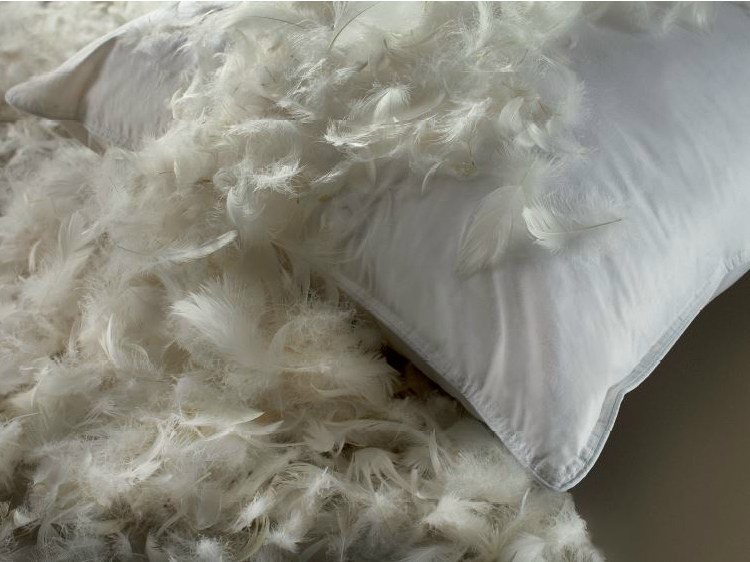
What can you do about it? Is there even a way to stop a goose down pillow from leaking? Yes, in fact, there is!
Let’s separate this problem into two categories, and then address each, one by one:
- If you already have a pillow that leaks
- If you’re about to buy a new pillow
Each case has a different course of action, so let’s discuss.
If you already have a pillow that leaks
If your pillow currently leaks, then you need an immediate solution. Here then, are three tips that should stop the goose down fill from littering your bed.
Use a pillow protector
Simply covering your pillow, will keep a new pillow from leaking, as well as stop an old one from leaking. So, if you don’t already, start using a pillow protector like this one from National Allergy.
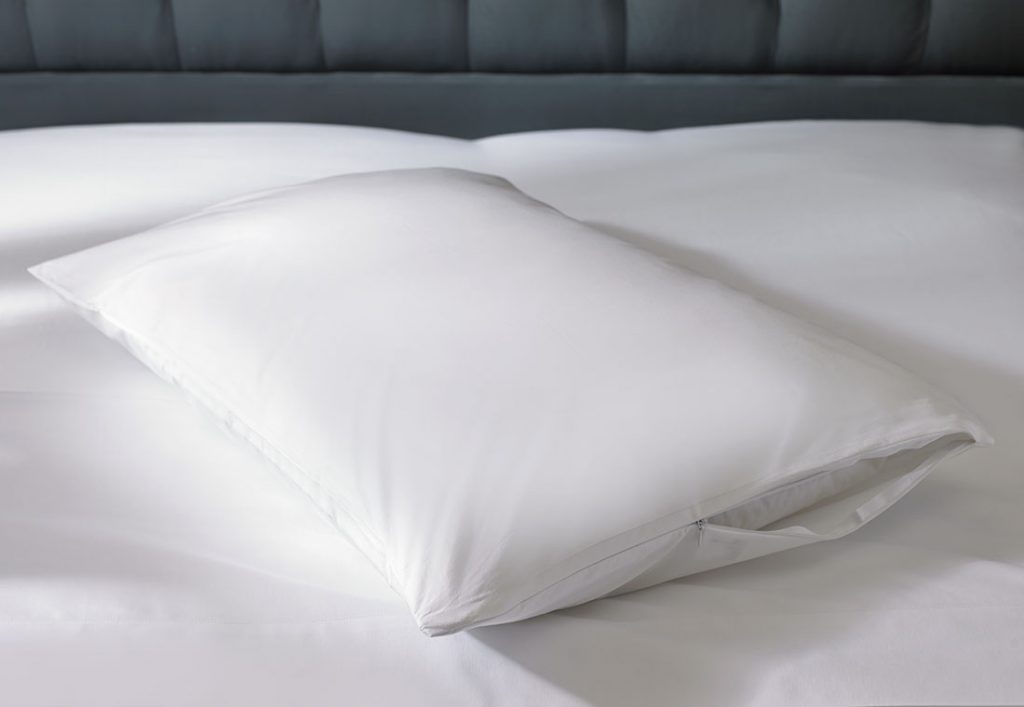
A pillow protector will keep the down feathers from leaking out, and it will protect your pillow to prevent a higher rate of leaking.
The fabric of a pillow protector is made of a very tight weave, and it keeps the quill end of the feathers from poking out. The down might still leak out of your pillow, but will remain trapped inside of the protector.
The pillow protector will also protect the outer cover of your pillow, which slows down the wear and tear that causes the outer fabric to weaken, and allow more feathers through.
A pillow protector is just good pillow practice – even if you don’t currently have goose-down pillows.
Patch or sew any holes that your pillow might have
Carefully scan the entire surface of your pillow, and look for any holes that you might have. It doesn’t take a big hole for feathers to leak – a .25″ hole is plenty enough!
Take a moment, and look across the entire width of the pillow on both sides, then run your finger along the seams – this is the weakest part of the pillow, and usually where leaks occur.
If you find any holes, either sew them up or patch them with some mending tape.
Fluff regularly
Fluffing your down pillow, particularly right before you get into bed will also keep it from leaking. Give your pillow a good fluff to move any down feathers that are ready and in position to leak out.
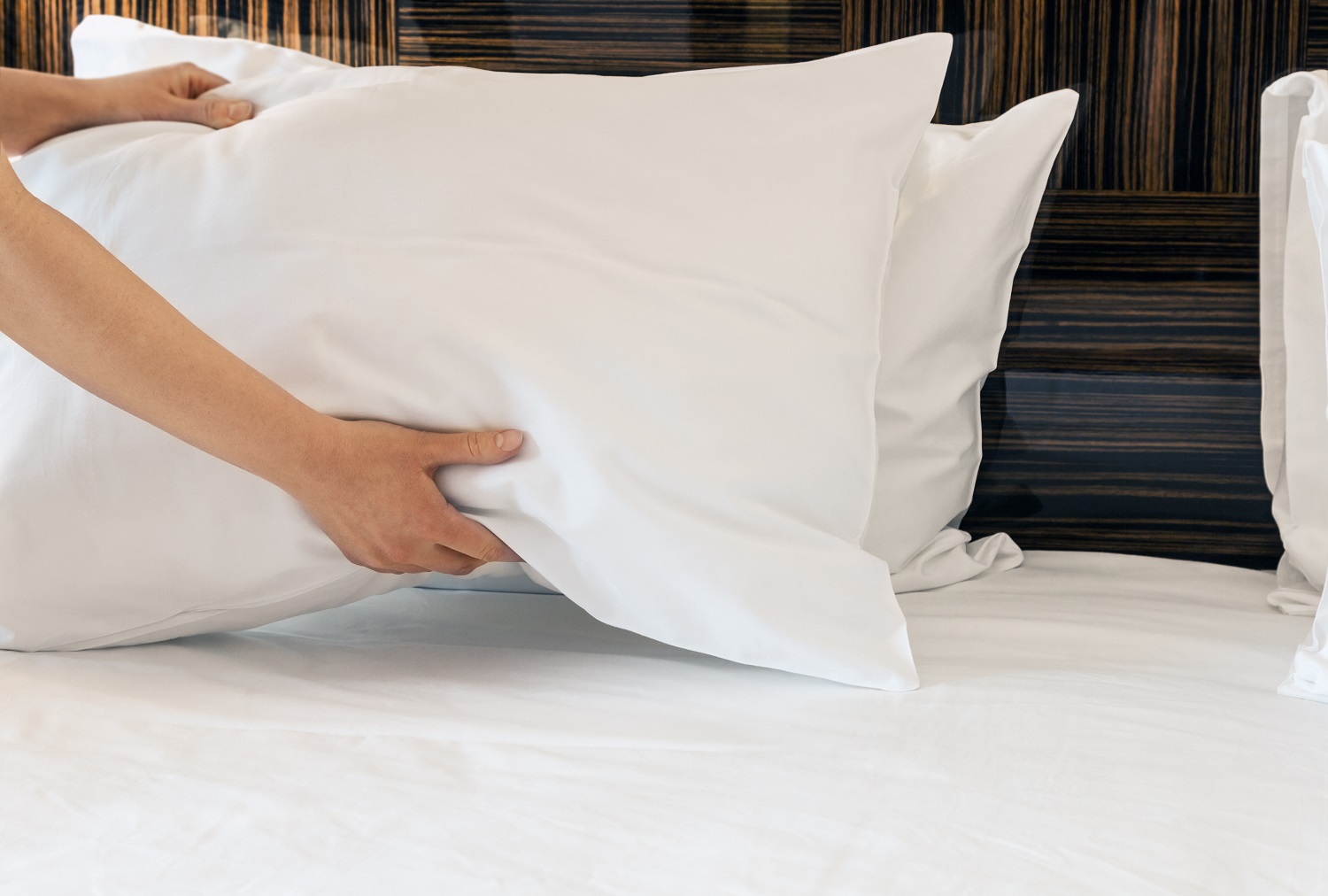
Often times, the quill end of a feather will get stuck in the fabric of the outer cover, and will just need a bit of compression to fly out. A light fluff is enough to shake things up.
Fluff your pillow tonight, but also fluff it often. It doesn’t have to be every single night, but try to fluff at least a few times per week.
If you’re about to buy a new pillow
If you’re shopping for a new pillow, and curious about how to avoid future down leaks, the key here is to look for a quality-made pillow like these Chamber pillows from Downlite.
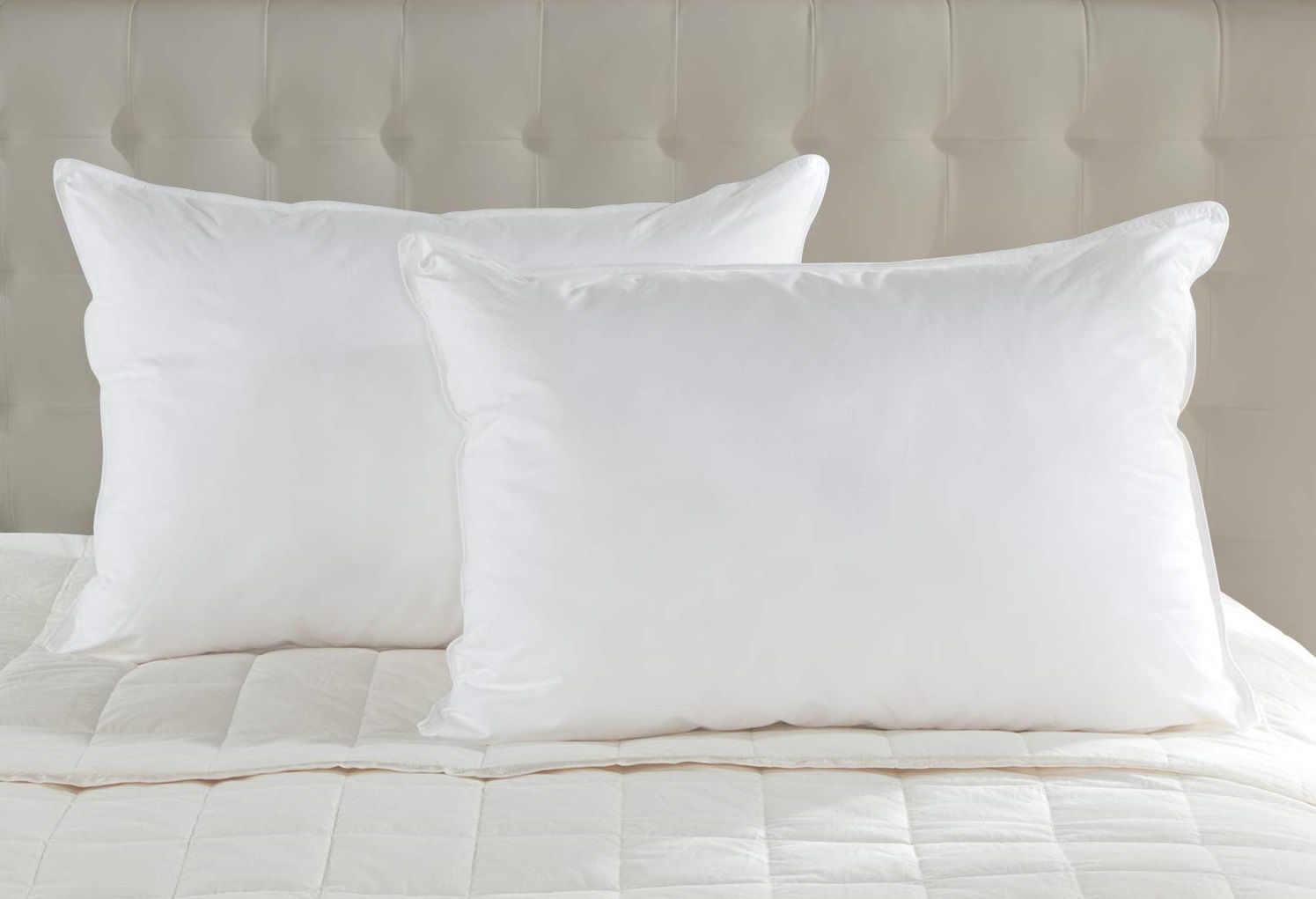
What is a quality-made pillow, for example? And what are the features that you should look for?
Cambric cotton
Look for a pillow whose outer cover is made of 100% cambric cotton. Cambric cotton is durable and features a super tight weave, similar to that of a pillow protector.
This tight weave will prevent the down feathers from poking out through the surface of the pillow.
Don’t worry about the fine details like thread count etc. You’re going to placing a pillowcase on the pillow, so those details are meaningless.
Knife edge seams or piping
The edges or seams of the pillow are its weakest points. This is where most leaks occur, and where most holes develop.
A cheap pillow will have cheap construction, which for a pillow means no edges.
If you look at a cheaply made pillow, you won’t see any edges – Just threads that connect the two pieces of the outer fabric. Something like where the sleeves of a t-shirt meet the shoulders.
This lack of a true edge makes for a loose seam – one that comes apart easily.
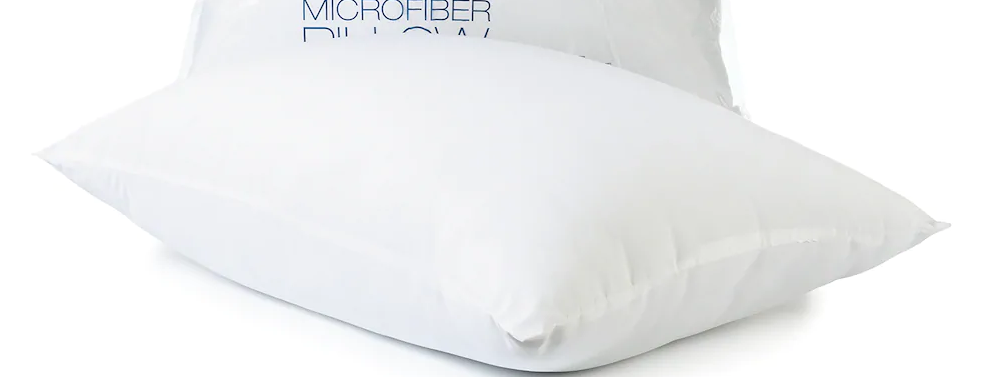
Look for a pillow that describes its edge type. Quality made pillows will always disclose whether the pillow features knife-edge seams, piping, etc.
The Downlite pillow we spoke about at the beginning of this section features knife-edge seams, which look like this:
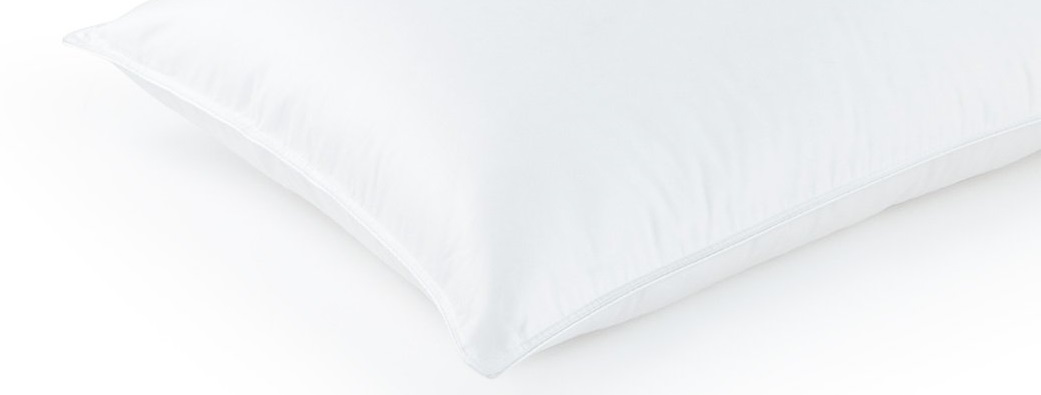
Do you notice how the two sides of the pillow meet at a pronounced edge? That is what a knife-edge seam looks like. This type of edge is sturdy, tight, and solid.
Here is an example of a pillow with piped edging:
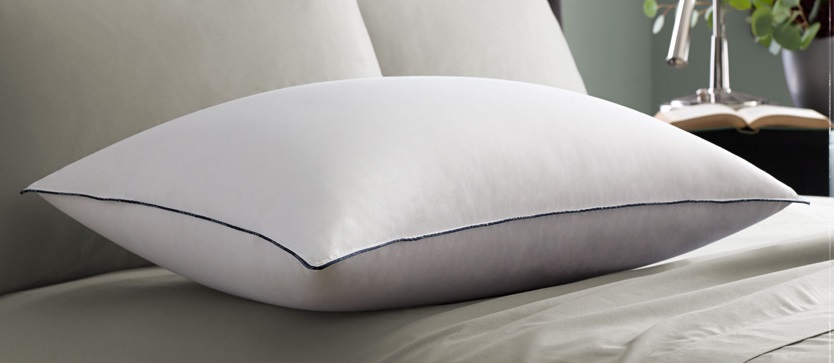
Piped edging is also a solid closure type, that will not unravel or come apart.
The point here is that poorly-made down pillows result in leaky pillows. So it doesn’t really matter whether you use a pillow that features knife-edge seams, or piping.
What matters is that you look for a well-made pillow, featuring well-built seams and selvages.
General pillow tips to prevent a new pillow from leaking
A quality pillow is still vulnerable to leaking if not cared for. So, here are some tips to keep your down pillow leak-free for years to come.
Treat a new pillow like a leaky pillow
Giving a new pillow the same care that you would a leaky pillow will prolong its life, and prevent future leaks.
Fluff regularly, and use a pillow protector. It’s never too late to start.
Don’t abuse the pillows
Unnecessary wear will cause the outer fabric to weaken, and make it much easier for down feathers to poke through.
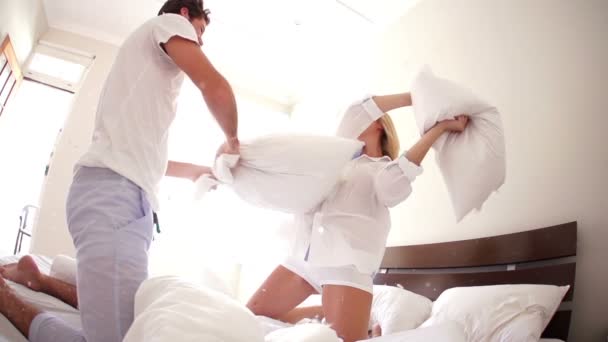
And use your pillow for sleeping purposes only. No pillow fights!
Wash as little as possible
Just like your sheets and clothing, the fabric of the pillow cover does weaken over time from the washing and drying cycle.
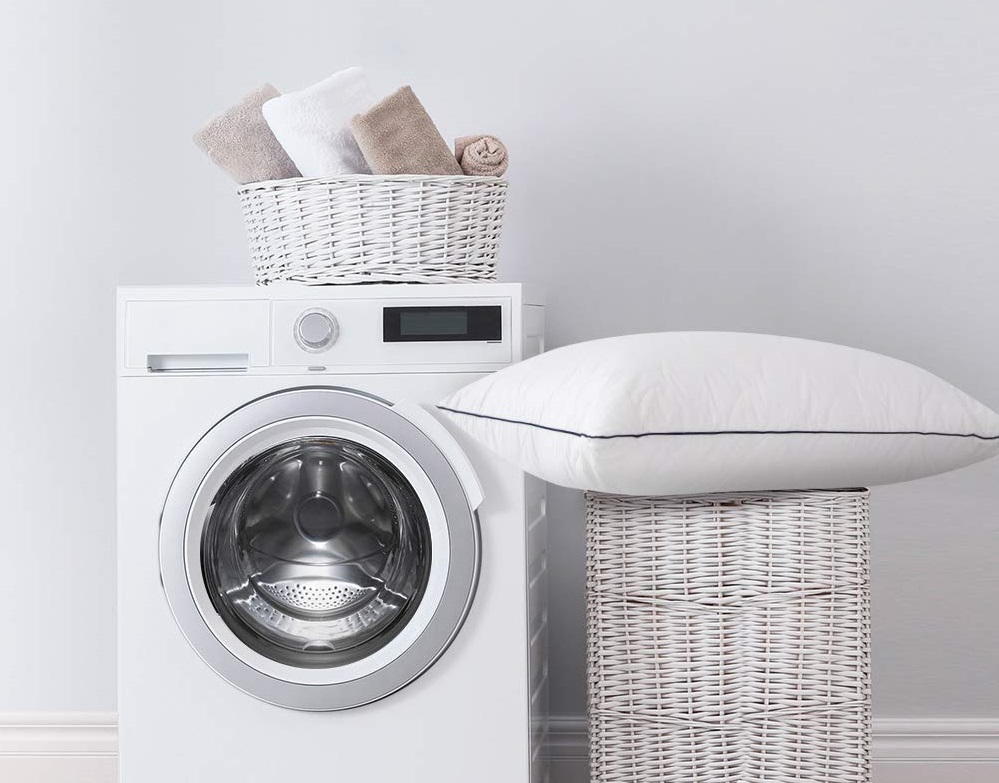
Keep your pillows clean, and avoid washing them as much as possible. This is another good reason to start using a pillow protector!
Don’t vacuum pack or compress
When storing your pillows away for later, avoid compressing them in any way. Compression can force the quill ends into and through the outer fabric.
Allow your pillows to keep their natural shape when in storage.
Final thoughts
It’s quite normal for a goose down pillow to occasionally leak a feather or two. However, if you notice multiple feathers, that is a sign that your pillow might be developing a consistent leak.
Get ahead of the issue using the tips above to contain the problem, and keep the leaks to a minimum. It doesn’t take much for a small leak to turn into a big leak.

Toss your down pillows into your clothes dryer and let them fluff on the Air-only (no heat) cycle for a while. It’s like an automatic pillow-fluffier!
That’s a lie. Putting your feather pillows and blankets in the washer and dryer no matter heat or not will make the fabric get weak and those feathers will keep leaking. A pillow protector it tight weave and won’t allow the feathers to come through.
I am allergic to feather and down pillows and doonas. My sinuses suffer. But I would love to return to them as they are so wonderful.
Could you recommend a brand that would be secure for me please?
Thanks, Lucienne Coverdale.
Lucienne,
Like with almost everything else, you definitely get what you pay for with feather products!
The feathers themselves aren’t the allergen, it’s the dust, pollen, etc. within them that carry the allergens that people suffer from. Good quality featherbeds contain feathers that are ultra-clean – feathers that have gone through a thorough cleaning process, which makes them allergen-free.
I would suggest American brands like Downlite, or Pacific Coast Feather. Those are usually pretty safe for allergy sufferers.
Vaheh